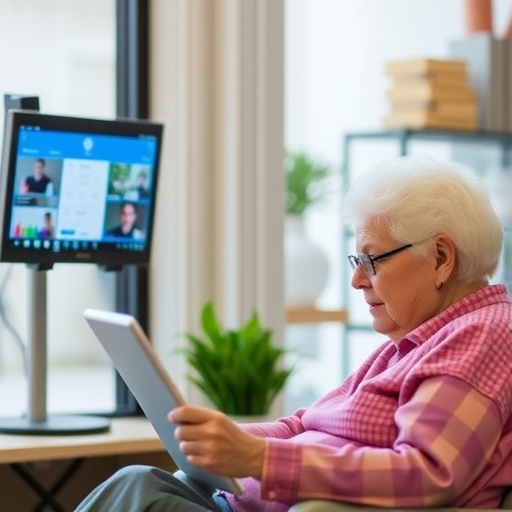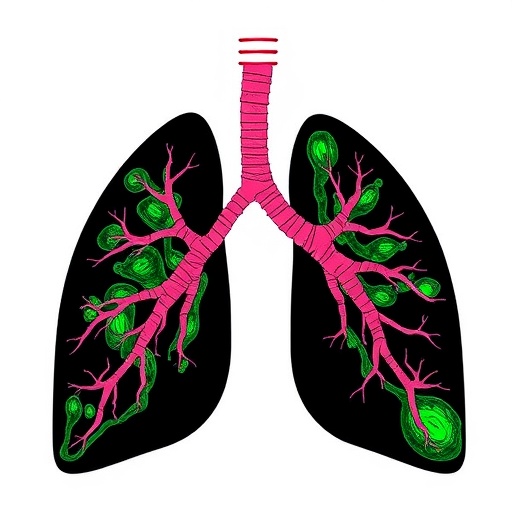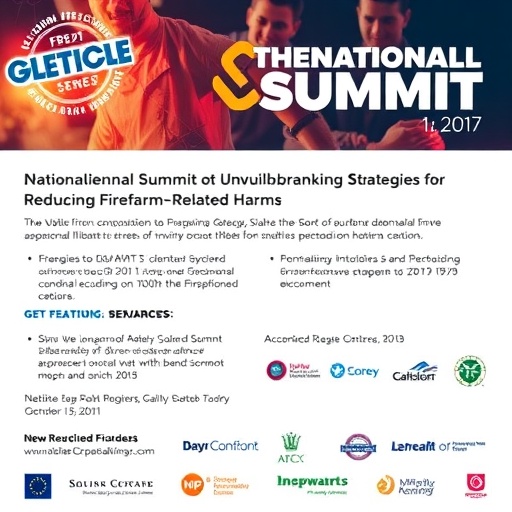As populations age at an unprecedented rate globally, the need for innovative healthcare solutions has become increasingly urgent. The latest research by Salma et al., published in BMC Geriatrics, delves into the effectiveness of remote monitoring systems designed specifically for older adults at risk of severe health complications. The study emphasizes the potential of technology to bridge the gap in healthcare delivery, particularly for the rapidly expanding elderly demographic that faces unique challenges in managing their health.
Remote monitoring systems represent a significant technological advancement that aims to enhance care quality and foster independence among older adults. These systems include a variety of tools and devices that facilitate the monitoring of patient health from a distance. This innovation allows healthcare professionals to track vital signs, manage chronic conditions, and even intervene in emergencies without the need for patients to visit medical facilities in person. By leveraging real-time data, healthcare providers can offer timely interventions that can significantly reduce the chances of hospitalizations or severe health outcomes.
The scoping review conducted by Salma and colleagues meticulously examines a wide range of existing literature surrounding remote monitoring systems. The authors gathered data from numerous studies to analyze how these systems are being utilized and their overall impact on the health outcomes of older adults. By aggregating findings from various research efforts, the review seeks to identify gaps in knowledge and areas for further exploration in the field of geriatric care.
A striking aspect of the findings is the considerable improvements in patient engagement facilitated by remote monitoring systems. Older adults often experience challenges in accessing healthcare due to mobility issues, transportation difficulties, or cognitive decline. The introduction of remote monitoring tools empowers these individuals, providing them with a sense of autonomy and control over their health. Many patients find it reassuring to have health monitoring capabilities in the comfort of their own homes, which can promote adherence to prescribed health regimens.
The research also highlights the importance of user-friendly design in the effectiveness of these monitoring systems. Many existing devices have been criticized for their complexity, making them difficult for older adults to use without assistance. The review advocates for the development of simpler interfaces that can cater specifically to the needs of elderly users, suggesting that designs should prioritize ease of use and accessibility. By ensuring that technologies are intuitive, the likelihood of widespread adoption among older populations increases.
In addition to user-friendliness, the study emphasizes the significance of integrating remote monitoring systems with existing healthcare infrastructures. Coordination between tech developers and healthcare professionals is crucial to ensure that the data collected through these systems is effectively utilized in patient management. The authors argue that without proper integration, valuable health data may be underutilized, leading to missed opportunities for proactive care and interventions.
Addressing the issue of data privacy and security is another critical aspect of implementing remote monitoring systems for older adults. As these technologies gather sensitive personal health information, there is a growing concern about potential data breaches and unauthorized access. The researchers highlight the need for stringent security measures to protect patient data, along with transparent communication to build trust with users. Ensuring that older adults feel secure about the technology they are using is paramount to fostering their willingness to engage with remote monitoring solutions.
The literature review also sheds light on the diverse applications of remote monitoring systems, varying from chronic disease management to post-operative care for older adults. Chronic conditions such as diabetes and heart disease significantly impact the elderly, and continuous monitoring can allow for better management of these issues. By providing real-time feedback, patients can make informed decisions about their health, leading to better outcomes and potentially reducing the burden on healthcare systems.
Moreover, the COVID-19 pandemic has accelerated the adoption of telehealth and remote monitoring as health systems worldwide adapted to the constraints imposed by social distancing measures. This sudden shift has highlighted the importance of remote monitoring technologies as not just supplemental initiatives but essential components of modern healthcare practice. As environments continue to evolve, the insights garnered from Salma et al.’s research will play a crucial role in shaping future strategies to enhance geriatric care.
The findings from the review suggest a promising future for remote monitoring systems in providing care for older adults but also underscore the necessity for continuous research and innovation. Expanding the understanding of how these systems can be improved, integrated, and sustained will be essential to fully realize their potential. Future studies are encouraged to investigate the long-term effects of remote monitoring on health outcomes and patient satisfaction, ensuring that ongoing developments are aligned with the needs of older populations.
To conclude, the scoping review conducted by Salma et al. serves as a vital resource that highlights the potential and challenges of remote monitoring systems for older adults. As the technological landscape continues to evolve, embracing these advancements could pave the way for transformative changes in geriatric healthcare, promoting healthier, more independent lives for older individuals. The future of healthcare is undoubtedly intertwined with technology, and the insights from this research will contribute meaningfully to that ongoing journey.
Subject of Research: Remote monitoring systems for older adults at risk for complications.
Article Title: Remote monitoring system for older adults at risk for complications: a scoping review.
Article References:
Salma, I., Testa, D., Mpoy, Jv. et al. Remote monitoring system for older adults at risk for complications: a scoping review.
BMC Geriatr 25, 766 (2025). https://doi.org/10.1186/s12877-025-06385-8
Image Credits: AI Generated
DOI: 10.1186/s12877-025-06385-8
Keywords: Remote monitoring, older adults, healthcare technology, chronic disease management, patient engagement, data privacy.
Tags: BMC Geriatrics research on elderly healthchronic condition management for older adultseffectiveness of remote monitoring technologyenhancing independence in seniorshealthcare solutions for aging populationinnovative healthcare for at-risk seniorsreal-time health data for elderlyreducing hospitalizations in elderly careremote health monitoring for seniorsremote patient monitoring systemstechnology in elderly caretelehealth interventions for seniors





